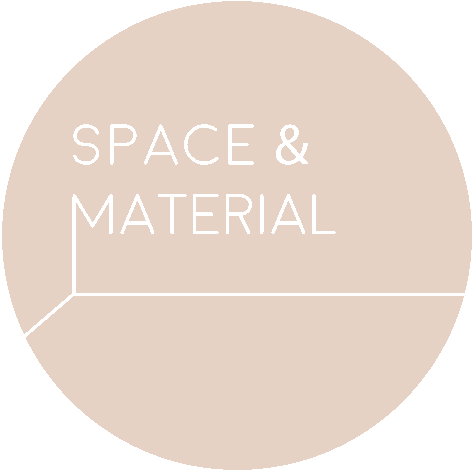OPEN DOOR CONVERSATIONS WITH LEE NINI
‘I realised I can’t save the planet by making art… but maybe I can make somebody feel a bit lighter for a few seconds and if that’s possible then it’s okay.”
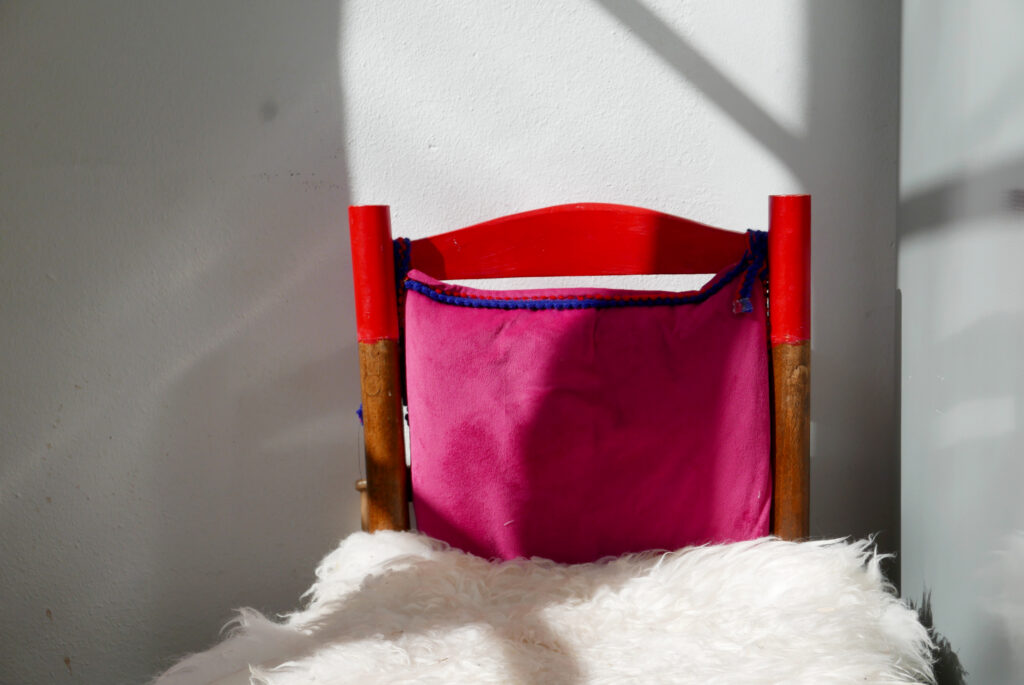
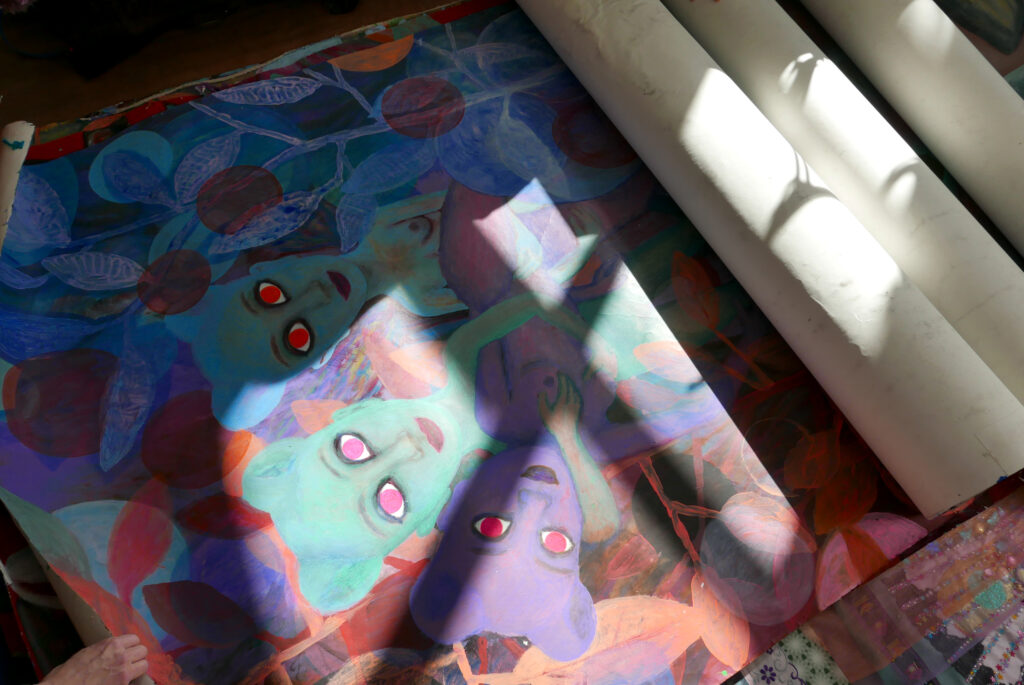
Making her exhibition miniature
I have 14 big paintings or 15 maybe…it’s huge. You see? It’s funny they haven’t been out in this house yet. This is the first time. These are also in the prints (shown in the exhibit). But it’s just too big.
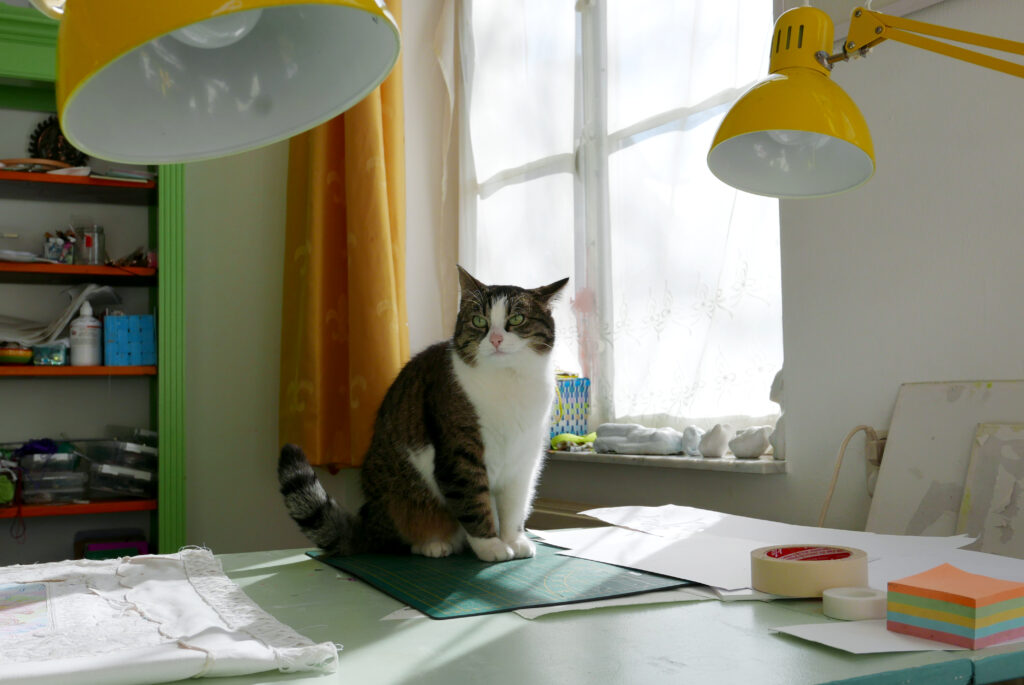
Describing her work
My mother did teach us how to sew early on, so that was always a thing I like to do as well. Also with animation, I do the dances (in the animations) myself. And the animations are all painted, I make small animations from painted elements. But everybody can really make anything now with technology so I really have to find myself, maybe making short films and that’s also really what I want to focus on.
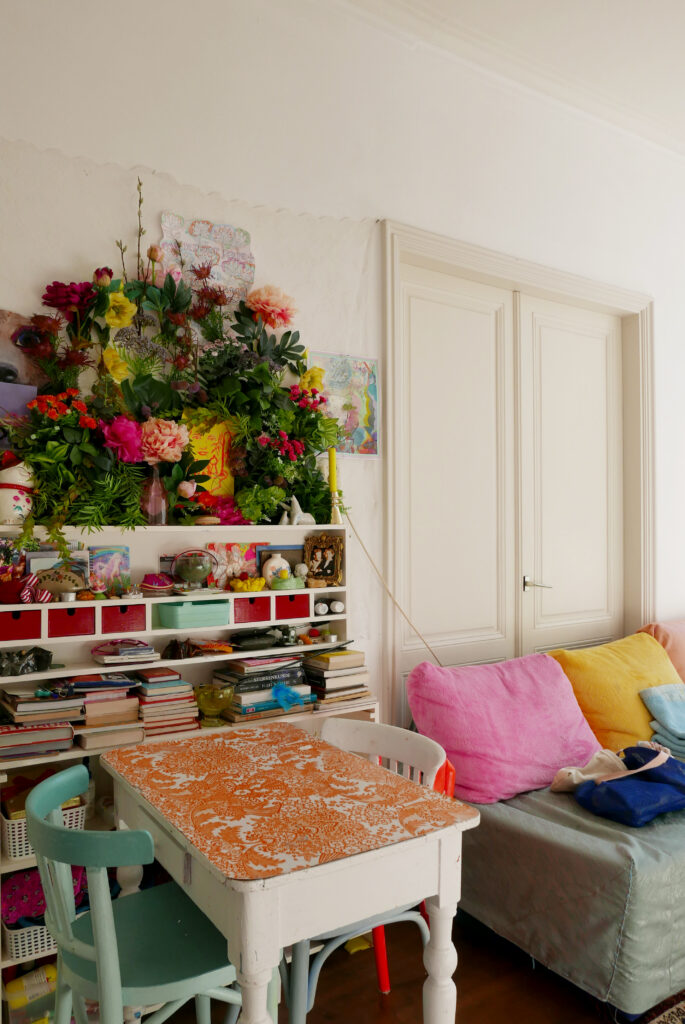
I went to Mexico in 2018 and there, in one hour, I saw seven whales and 18 dolphins and orcas. The men on the boat were like, “This we have never seen before!”, it was a show like you wouldn’t believe in front of the coast of Mexico. And after seeing the whales, I felt a connection with nature.
So then I thought I shouldn’t use paper anymore, no plastic, but I couldn’t get it all together so I just focused on the project of Lee Nini (the story) and I realized I can’t save the planet by making art… but maybe I can make somebody feel a bit lighter for a few seconds and if that is possible then it’s okay,
So that’s actually my goal, that’s the goal.
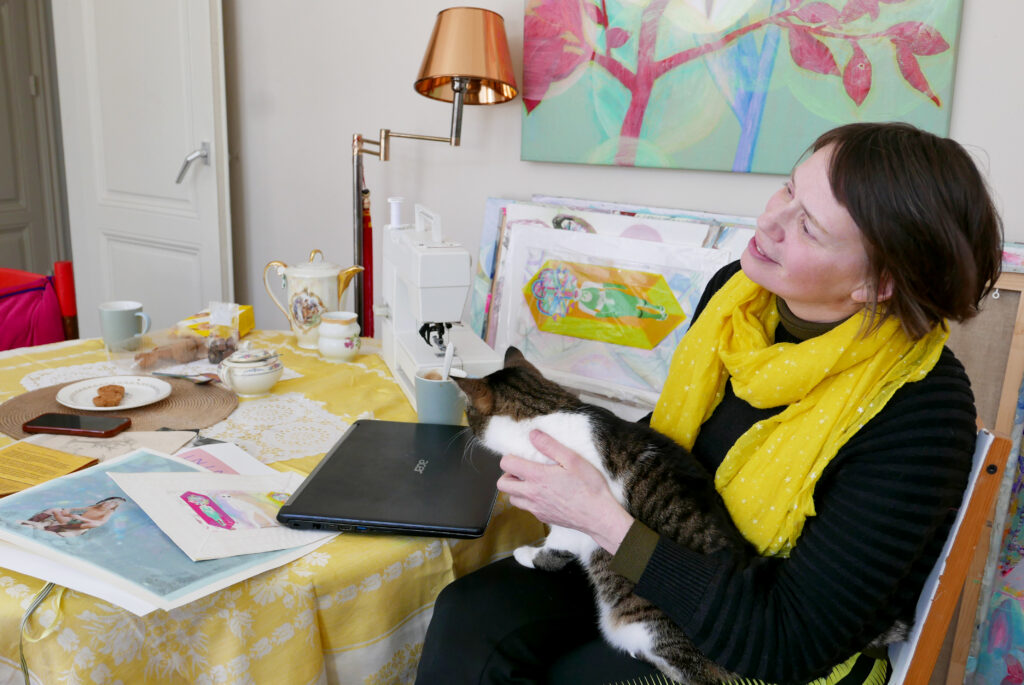
On the exhibit
It’s about two friends who have lost each other and find each other again. That’s what it is about. And the way they find each other is… well, I’m very much into science fiction and I try to keep it as simple as possible and place one of the characters on a planet behind Saturn so it’s not a parallel world, it’s the same solar system. But they do communicate through wormholes to send each other stuff. That’s the basics of it…
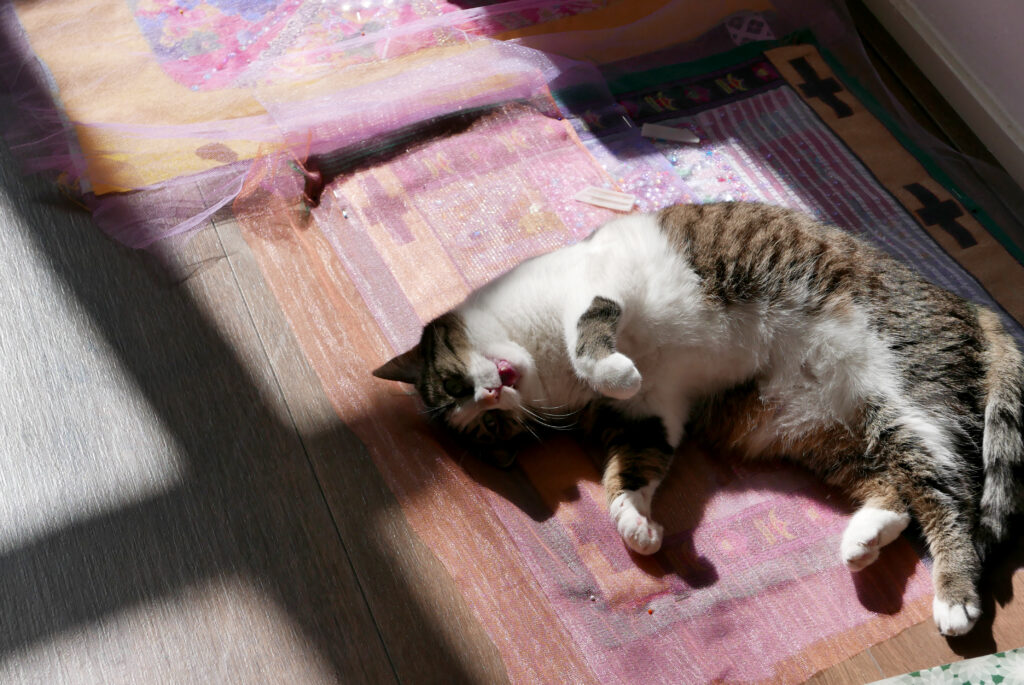
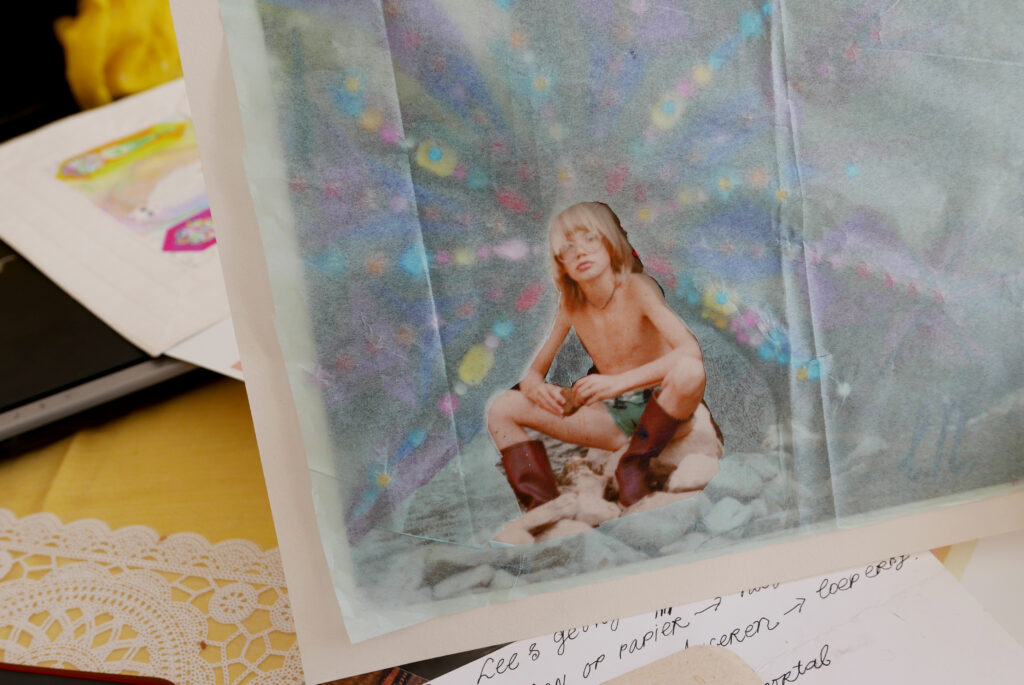
I think it’s rather a naive story in that everything is for the good and the protection of the good. Every heavy painting is depicting a guard for the good and not something aggressive. I feel very responsible on not giving people a heavy feeling. The drawings of the brother are rather disturbing but I place them next to like very light stuff, like the yellow, you can see over there. I make two of the drawings next to the film and they are infected, they grow flowers because they are so close to the film which is light. It’s all about just everything being good in the end. I’m just a sucker for that.
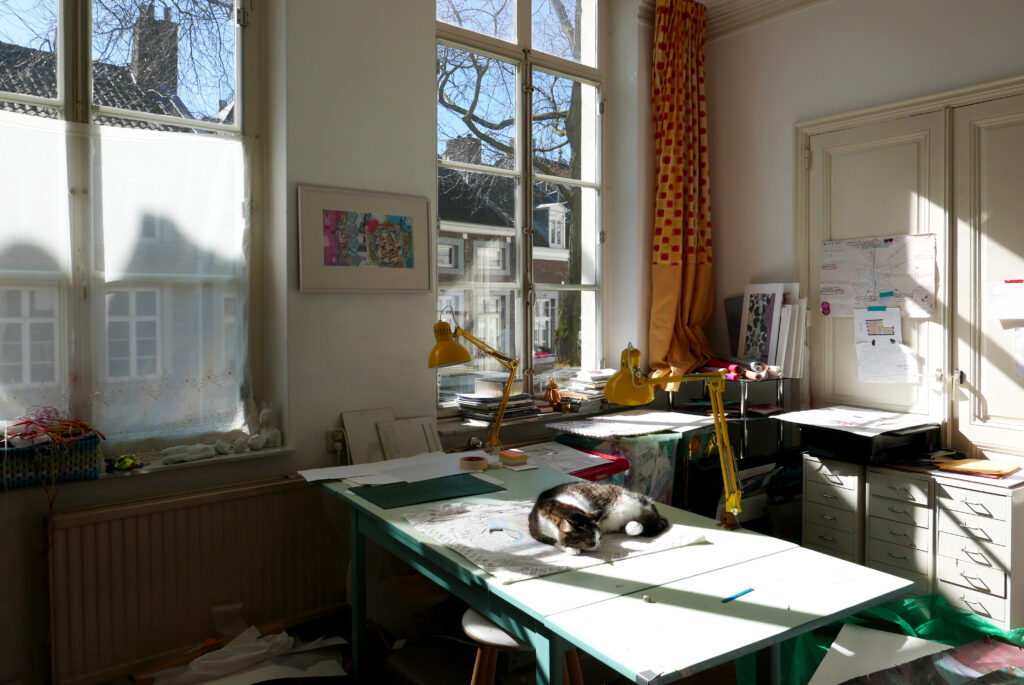
Just before Covid I had a little viewing of all my films. It was with the International School and they (the students) were there and they were just so happy. They were looking at it. One girl came up to me and she said, “I have the feeling anything is possible.” And then I felt like, “Oh wow, this is really what I want.”
If you see this (gestures to her paintings), you might not get it but if you see the films and relax in the back (of the exhibit), hopefully you get it.
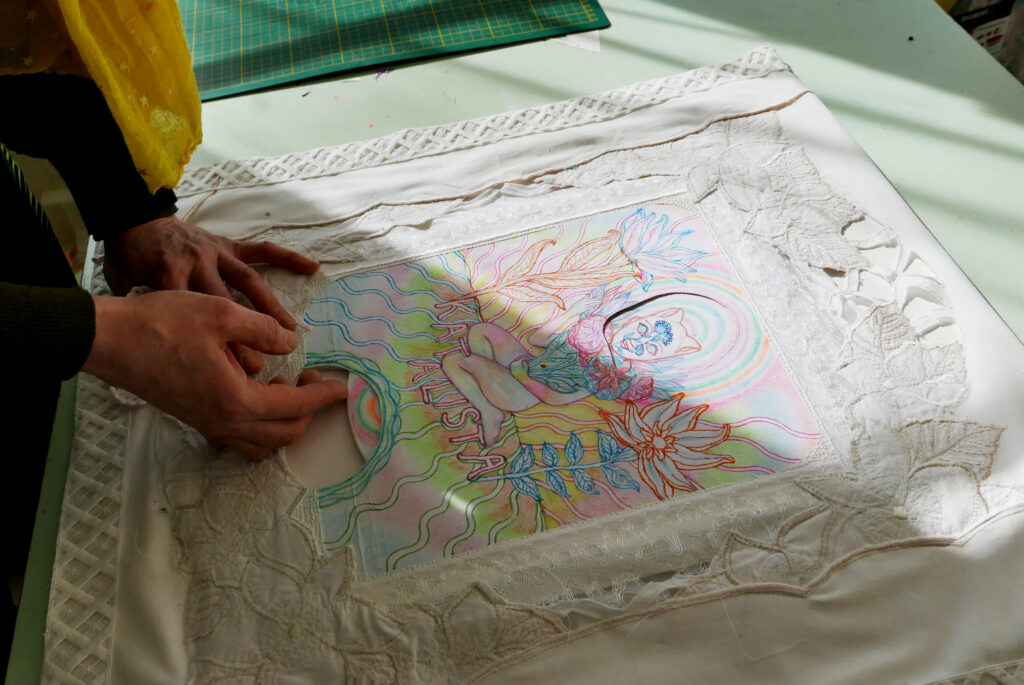
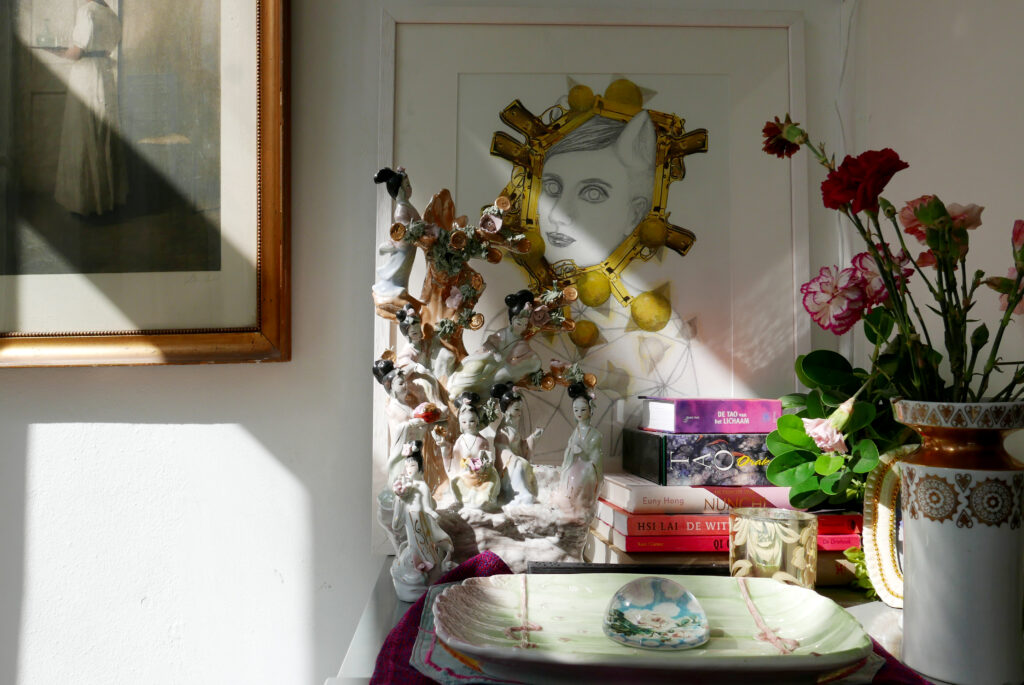
On what signals a project’s end
The problem was, I was all the time editing all my work, painting over painting, changing films, making new combinations. So it has all been like a circle all the time and with this story now, I can maybe move forward more.
To be honest, I’ll be so happy once this is all done.
What makes her workspace her own
I’m super sensitive to color. And I’m so blessed with this space now, but for instance, this table, I paint a table like this before I can even have it in the space.
I was in anti-squat places in Maastricht and everywhere I know how to make it [pauses] I have to recognize myself or else I feel alienated. So color does a lot. It’s not really in the objects, but the color. That’s the essence, a good workspace for me is the colors.
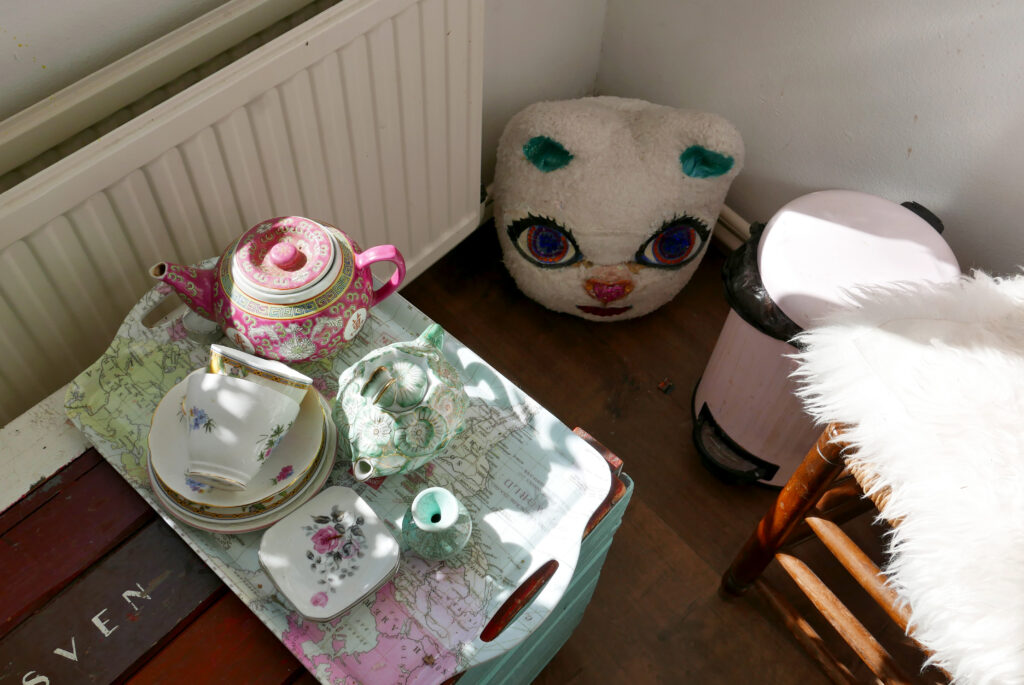
The Cat (head mask)
I put her on my head, I got it at the Asian shop. It’s a man actually, and on top of that, I made this. I do want to see if I can make another recording with it (the head mask).
She has had several names but in the end, I call them all the ‘Katalista’ characters and those are the sort of mythical (ones), that can really bring you luck. Those are very important in the end. This is also the sort of technology that enables them (the characters in her exhibit) to communicate.
On being an artist
This is really hard to answer because for me it was all very important. When I was 15, we had exhibitions in school and I had a lot of exhibitions and it was very nice. There was even a gallery that wanted to do an exhibition with me but my drawing teacher stopped it. He said, “You are not ready for this at all.” And when I think back, he was very right about this. And even now, I really don’t know how to be “The Artist”.
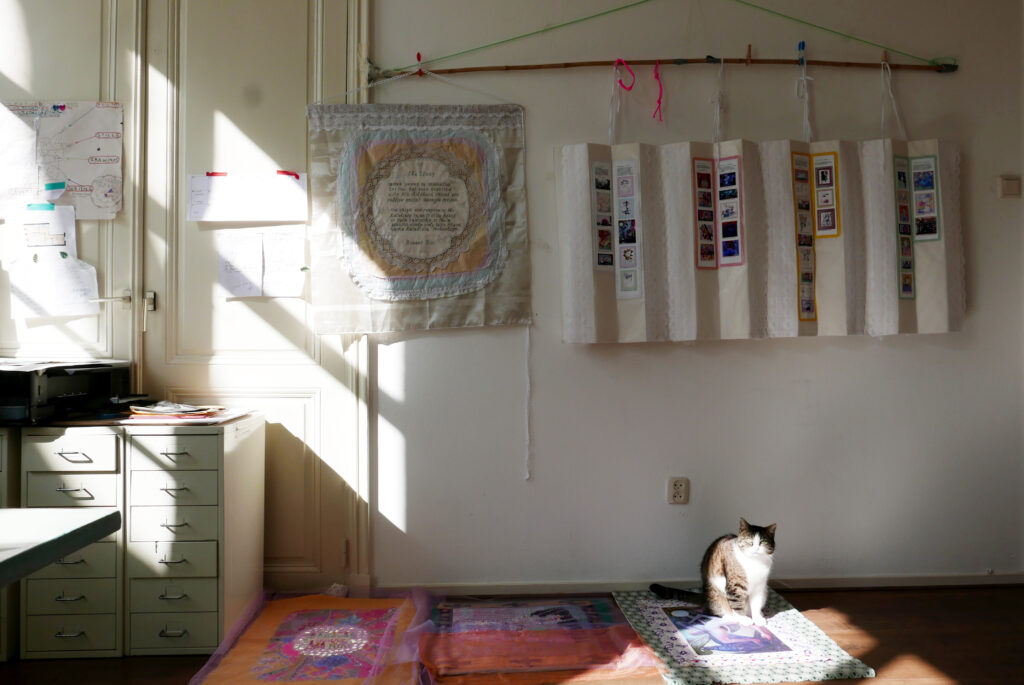
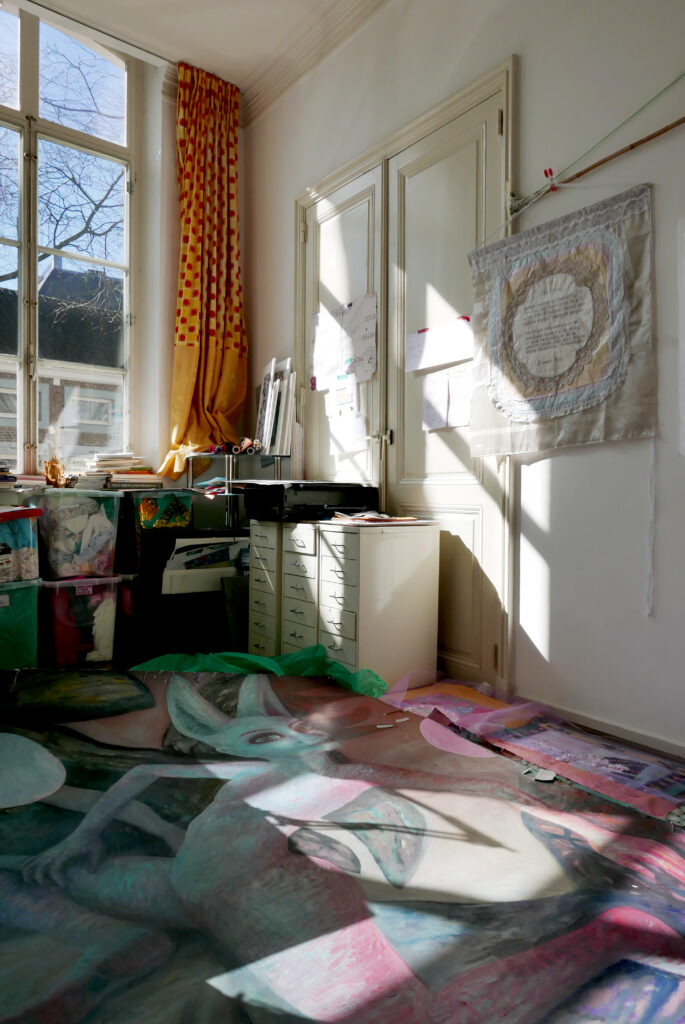
I actually wanted to be a doctor and a pilot but in the end…
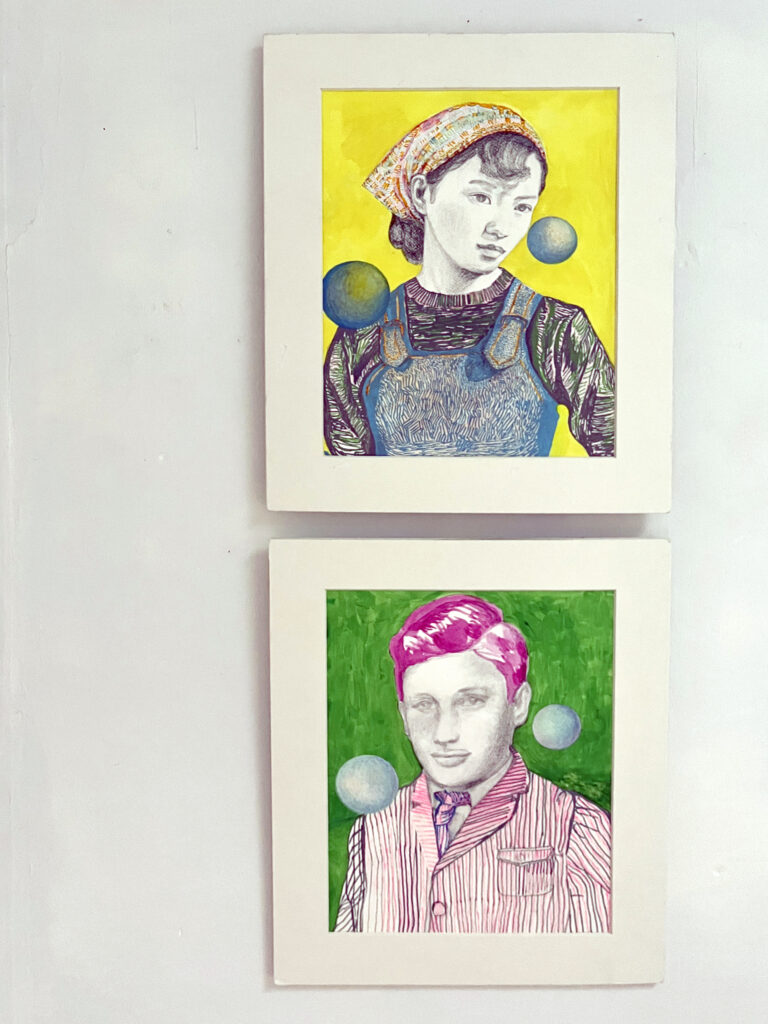
Her process of creating
There was a period where we didn’t have a lot of money at home. My mother, she would get a second-hand couch and she knew a place where she could get nice fabrics that were not used in the shops because there were faults in it, but they were beautiful. She put that around the couches. She always had these tricks of doing stuff to make something out of nothing. I think that is something I also really like to do, like make combinations because things can really strengthen one another.
For instance, I put this under and when you put it on, something else happens. Sometimes you think, “No it’s wrong”, but that’s the process in the end, it’s a serendipity thing…
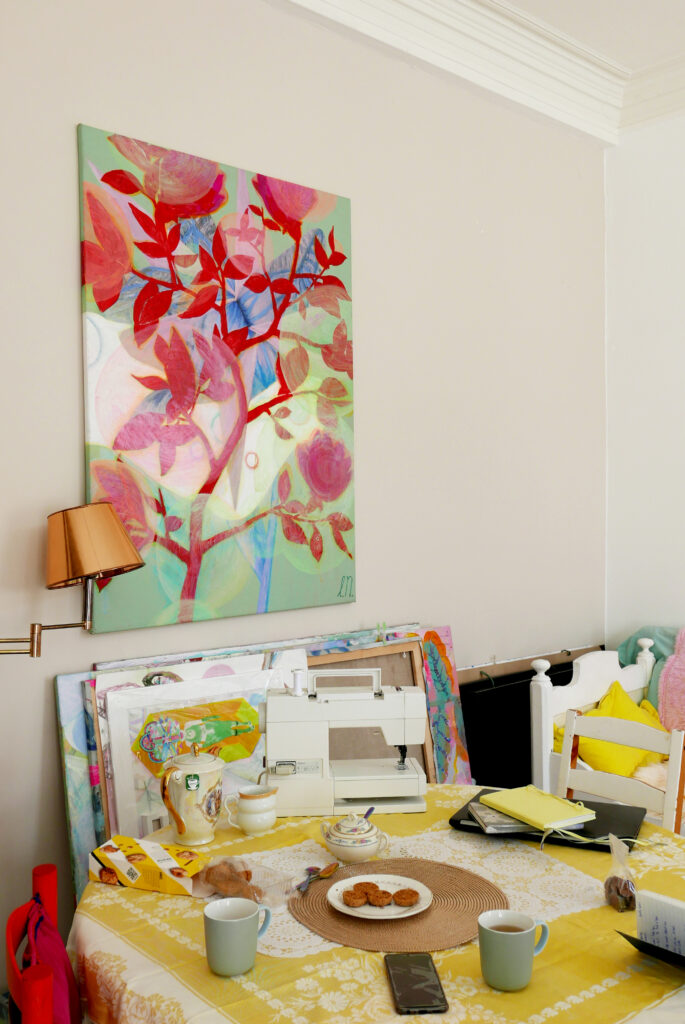
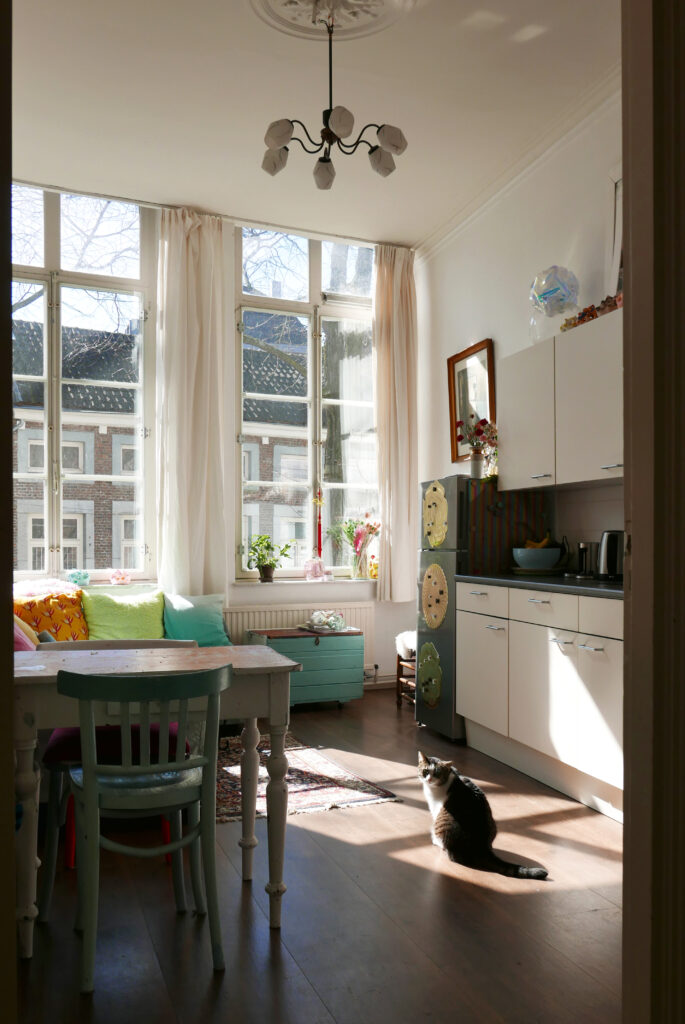
Influences
I read until I was 12 and then I thought I knew everything. [laughing]
I can’t read anymore, that’s the terrible thing. I do have some films, like Arrival is one I really love because of the round story in it. And, yeah, this is a bit cheesy, but also Contact. And Interstellar also. I had a period when I lived in Utrecht where I went to the movies three times a week. And I also was very much into art, like Joseph Beuys was one of the artists I really loved, and Anselm Kiefer.
That was a period where I could really relate. Then suddenly I just got over sensitive, I don’t know what it is but I often feel like I can’t take it, to go to real big art things because I am just overwhelmed. I often feel like I live in a bit of a bubble, but I prefer it that way.
On coming to Maastricht
I lived in Utrecht for a really long time with my boyfriend and he has a background here. His grandparents lived in Heerlen actually, his grandfather was a mine worker. When his grandmother died, the house which was in the family was available in Heerlen. We were such a long time in Utrecht, we wanted something else. Heerlen turned out to be a bit rough for me. [laughs] Although the house was lovely because his grandfather carved wood so there were all wooden elements in the house. This is also what really drew me to the house.
But the nice thing about it (moving to Heerlen) was that I discovered Maastricht. I had never been to Maastricht. And then I got my first workspace in Maastricht.
I’m in love with the city. I do find it a bit hard to [pause] integrate, but I heard I’m not the only one. I’m sort of used to being the stranger, or the outsider, so it’s ok. And I mean, yeah, just look outside [gestures to outside her window] I’m so happy I have trees. And the fact that Maastricht is so old, that is very special.
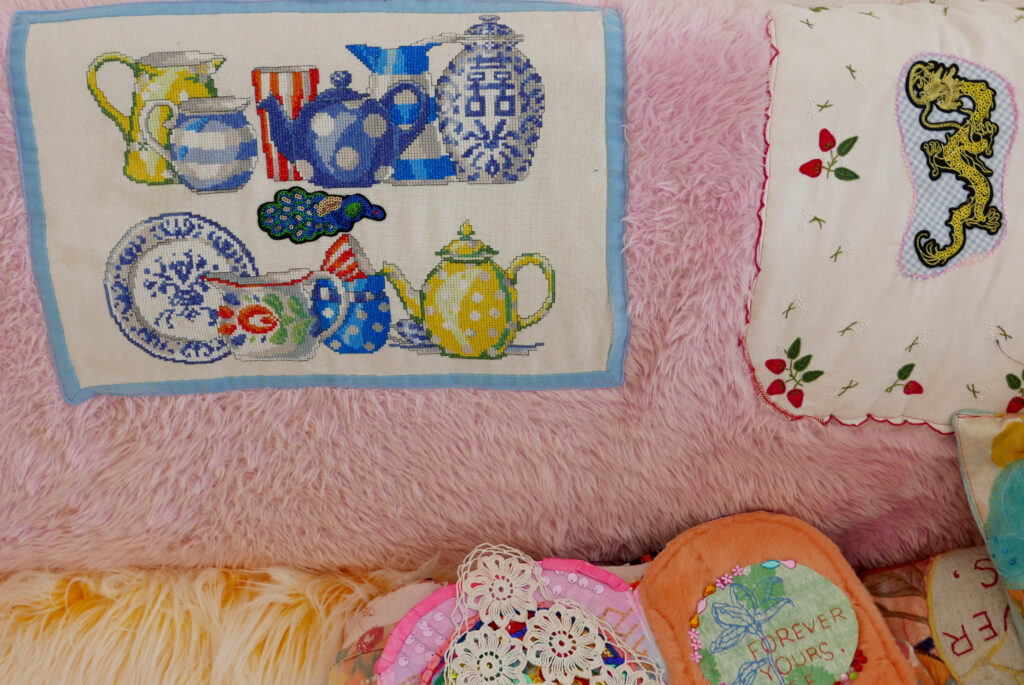
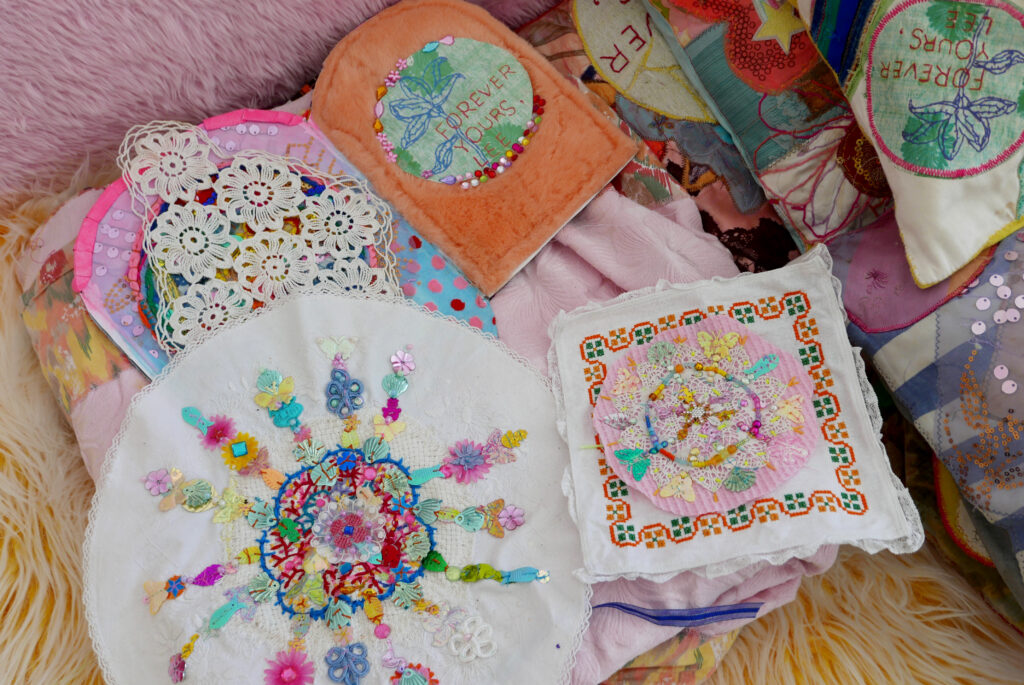
Lee Nini’s exhibition ‘Forever Yours’ is exhibiting in Hae from April 14 – May 12th, 2023.
